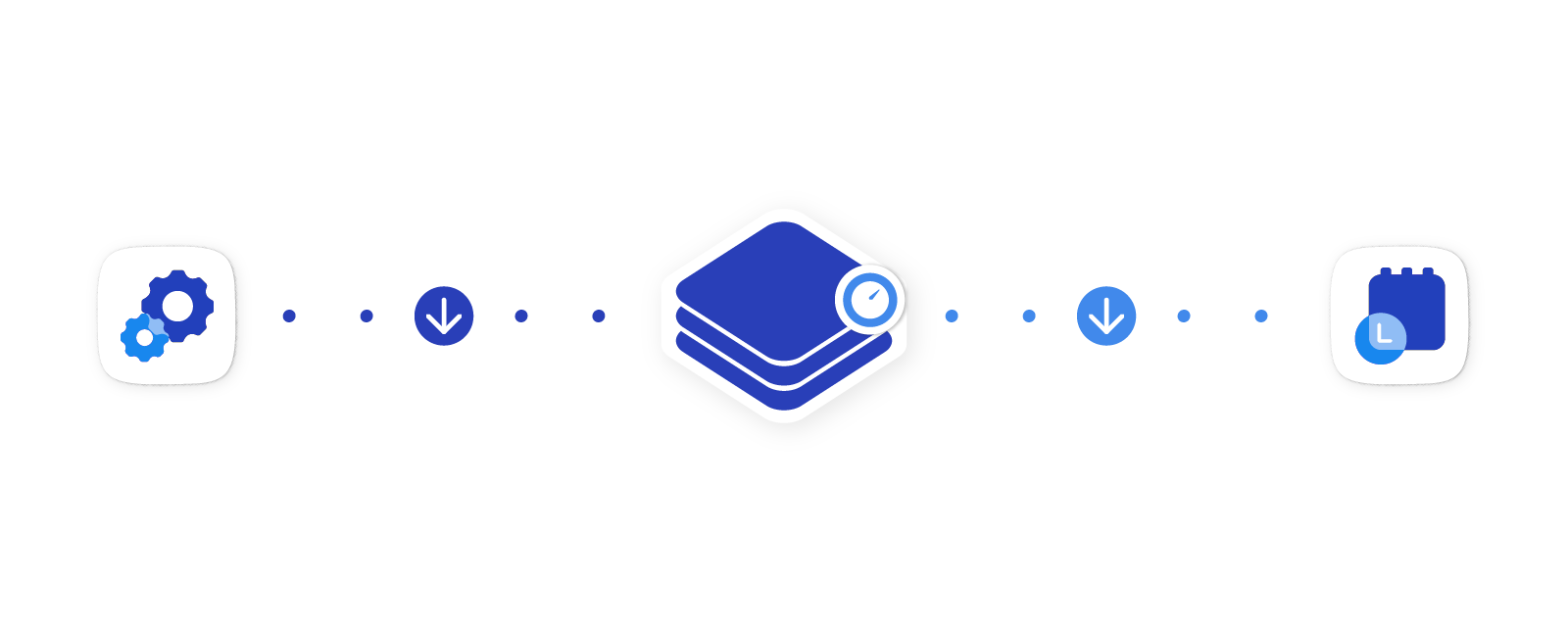Legacy software systems can be a nightmare for organizations due to the evolution of technology, changing business requirements, poor documentation, lack of industry standards, and employees’ resistance to change.
As technology evolves, many of today’s software systems will become legacy systems, perpetuating the cycle of complexity. So how can we navigate this challenge?
This article will explore the causes of legacy software complexity and provide strategies for managing it effectively so businesses can confidently move forward.
How It Started
Legacy software systems are complex, aging computer programs that have become difficult to maintain and update.
Although they may have been created with the latest development tools, programming languages, and techniques, they can quickly become challenging to upgrade because of their interdependent nature and increasing complexity over time.
The Proliferation of Software Vendors
The advent of the personal computer revolution in the 1980s and 1990s resulted in a proliferation of software vendors producing applications for sale. That caused organizations to move away from self-developed software solutions and toward more commercialized applications.
The Shift to Commercialized Applications
This shift constrained custom software development as companies attempted to make money by selling off-the-shelf software products.
As a result, legacy systems began to appear and increasingly became an outdated, necessary evil for specific operations or businesses. They posed challenges with updates, other risk factors, and costs to be appropriately maintained.
Integrating with Modern Technologies
Organizations trying to update their legacy systems often need help because most modern tools, methodologies, and programming languages cannot integrate easily with existing legacy architectures.
Teams often need special education and experience beyond what would typically be obtained while developing contemporary applications if they are attempting to tackle such a project.
While some tools can help break down the technical complexities associated with updating or modernizing under-maintained systems, it remains daunting for most organizations.
Given these challenges, this issue will likely continue to burn company resources for years unless drastic technological advances occur within development methods.
The Mess We’re In
While legacy software may have been effective in its heyday, it can burden businesses because they cannot meet changing technological demands. That can lead to various issues, ranging from security concerns to data management and integration problems.
- Outdated Technology: Legacy software is typically built using older technologies that may not support current operating systems, databases, or development tools.One issue is that legacy software may have to operate on outdated hardware, limiting its ability to perform at optimal speeds. Additionally, older programming languages that constitute the original codebase may need more modern developer adoption, perpetuating the software talent supply shortage.
- Lack of Documentation: Legacy software systems are often difficult to update or maintain because of the need for proper documentation and comments within the code. With an understanding of how the system works or which sections may require updates, developers can accurately identify areas needing attention.
- Complexity: Legacy software systems often become complex as they age because of changes in business needs. With more employees using the system daily and more customers relying on its functionality, it is demanded to do more quickly. That brings about new requirements that may necessitate program changes, code refactoring, or even rebuilding from scratch—all of which are time-consuming and costly and can make an otherwise simple system much more complex over time.
Even if only minor updates are desired, many bugs or security issues could arise. These can add further complexity to existing code or require new solutions with unclear implications for the entire system.
- Dependence on specific hardware: Legacy software may require specialized hardware components that are no longer available through retailers, requiring companies to seek out vintage parts from alternative sources such as online auctions. Besides being more expensive than recently released components, these components may be more vulnerable to malfunctions and security issues.
- Integration with other systems: One of the most significant challenges legacy software poses is its inability to integrate with modern systems or technologies, making connecting and exchanging data challenging. That can limit an organization’s ability to leverage new technology or expand its software ecosystem, decreasing efficiency and competitiveness. Additionally, the lack of integration can lead to data silos, where information is scattered across different software systems and cannot be accessed or analyzed effectively. Consequently, decision-making processes can be hindered, leading to inefficient workflows.
- Security vulnerability: As legacy software systems are outdated due to progress in technology and industry standards, they often face security threats. They need the most up-to-date security features or protocols that meet industry standards. Older systems may have static passwords and dynamic multi-factor authentication techniques, making it easier for hackers to breach them.
Where Do We Go From Here?
There is no one-size-fits-all solution for dealing with legacy software systems, as each design is unique and requires a tailored approach. However, here are some effective strategies that organizations can use to manage them
- Evaluate the system: Assessing a plan before making any changes is essential to ensure that the changes do not result in an undesirable outcome.A practical evaluation of a system should consider its architecture, functions, and dependencies. That can provide insight into which areas need to be updated or replaced, help better understand how all the pieces fit together, and anticipate any potential issues before they occur.
- Develop a plan: Once a full assessment of the current system has been conducted, developing a plan to modernize or replace the system is crucial.This plan should be based on the organization’s business needs, budget, and timeline and should involve a phased approach to ensure minimal business disruption.
The goal should identify potential risks and challenges associated with the modernization or replacement process and include mitigation strategies.
It’s also essential to have a solid testing and deployment strategy to ensure that the modernized or replacement system functions properly and meets the organization’s needs. That may include conducting user acceptance, performance, and security testing to ensure the system is reliable and secure.
- Use automation tools: When it comes to legacy software systems, most companies are stuck in a cycle of manual system updates or replacements which takes up valuable time and resources. Automation tools provide an alternative approach for tackling this task by helping automate specific steps with little to no human interaction. That helps reduce labor costs and speeds up the process.
By using automation techniques, companies can identify opportunities for improvement that they may have otherwise overlooked without a capable system in place.
Furthermore, automation improves team communication through real-time communications, such as live chat access points or automatic notifications when changes occur within the system.
- Consider modularization: Legacy system decomposition, or the breaking down of a large and complex system into smaller, more manageable components, can be an immensely beneficial process for managing, maintaining, and updating existing systems. Separating a single, monolithic system into individual sub-components and modules makes keeping each module easier than updating the entire system. Unnecessary modules may also be removed from the architecture.
Moreover, distinct modules within a more extensive system make replacing outdated components easier without interrupting all other parts. That is especially useful if multiple updates are needed over time.
The risk of disruption of other services is lessened when updates are isolated to one particular module of a more extensive system. In some cases, partial updates are possible at a much lower cost than reintegrating an entirely new product.
- Invest in expertise and training: Legacy applications require a significant amount of maintenance and updating, so their developers must have comprehensive knowledge of presentation-layer frameworks, databases, and server-side languages. Without the proper training, developers won’t fully understand how to properly navigate changes in a legacy application’s architecture or optimize its performance. Investing in training helps ensure that developers have the necessary skills and information to take full advantage of the more reliable and predictable performance offered by modern technologies, such as containers, agile methodologies, and cloud computing platforms.
It also enables them to address issues arising from unsupported third-party components or platforms effectively. Investment in this area can also reduce costs caused by mistakes due to the lack of experience or knowledge among developers.
Overall, the key to managing legacy software systems effectively is to approach the problem strategically and develop a plan that considers the unique needs and limitations of the organization.
By following these strategies, organizations can minimize the risks associated with legacy software systems and ensure they continue to meet their needs over time.
Effective Management of Legacy Software Systems
It is impossible for organizations dealing with legacy software systems to bring them up-to-date since their original manufacturers or developers no longer support them.
However, with a strategic approach, effective management techniques can be implemented, allowing an organization to control costs and find suitable replacements for outmoded technologies. Organizations must proactively manage their software systems to prevent being caught in the same cycle of complexity with future designs.
Speed and agility are what define Kizen’s technology. We build industry-tailored, revenue-driving tools to supercharge your business operations with data.
We have the resources and expertise to deploy in weeks without disruption on a future-proof platform that prepares your organization for whatever comes next. Connect with us on our website, and we’ll schedule a time to chat.










